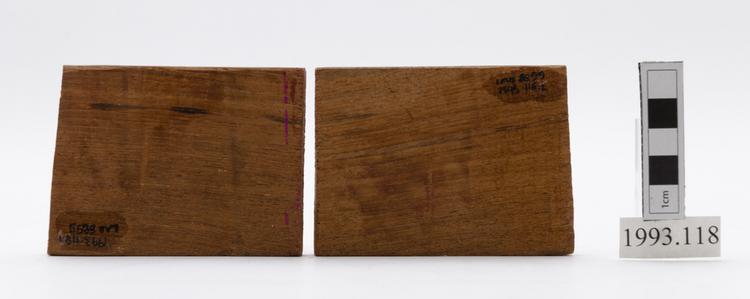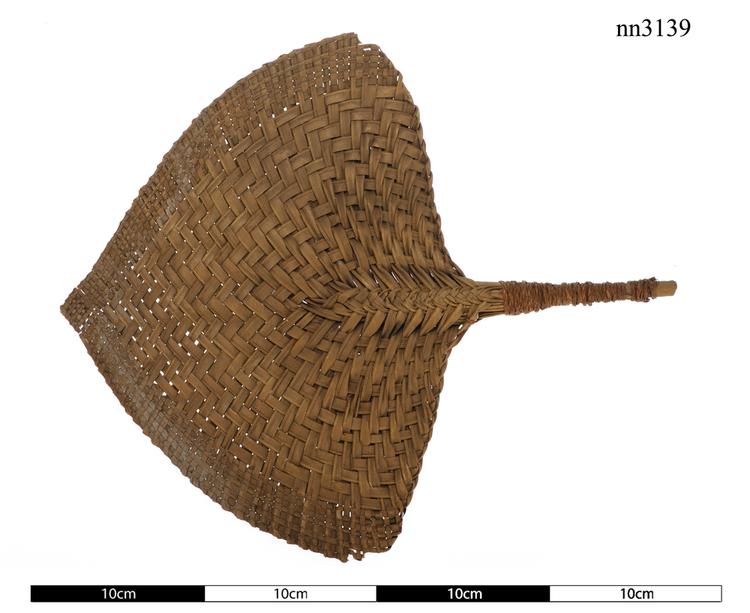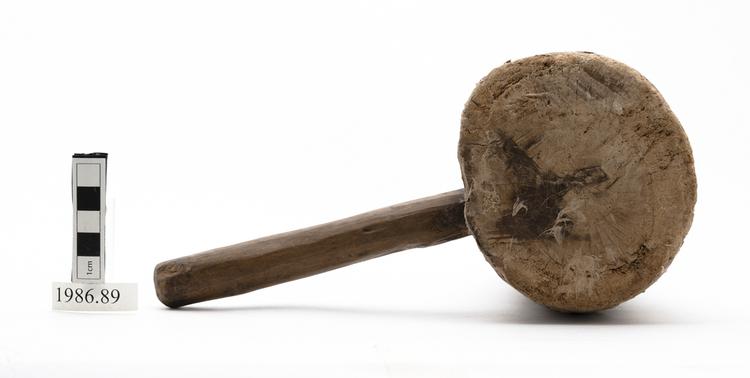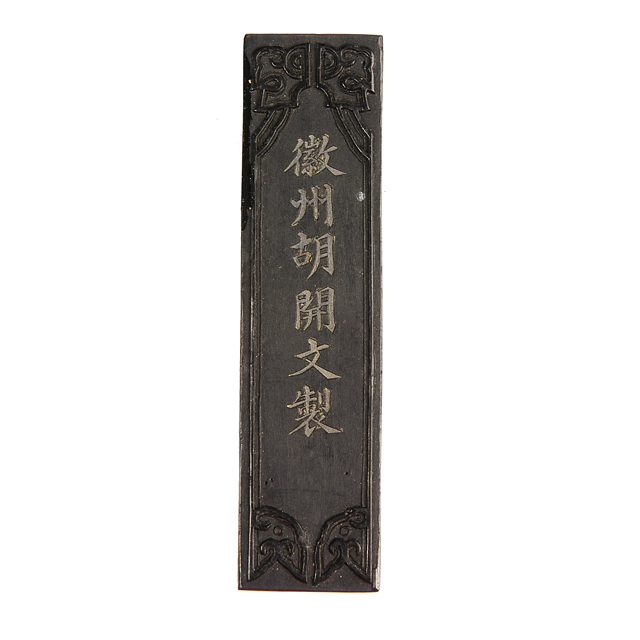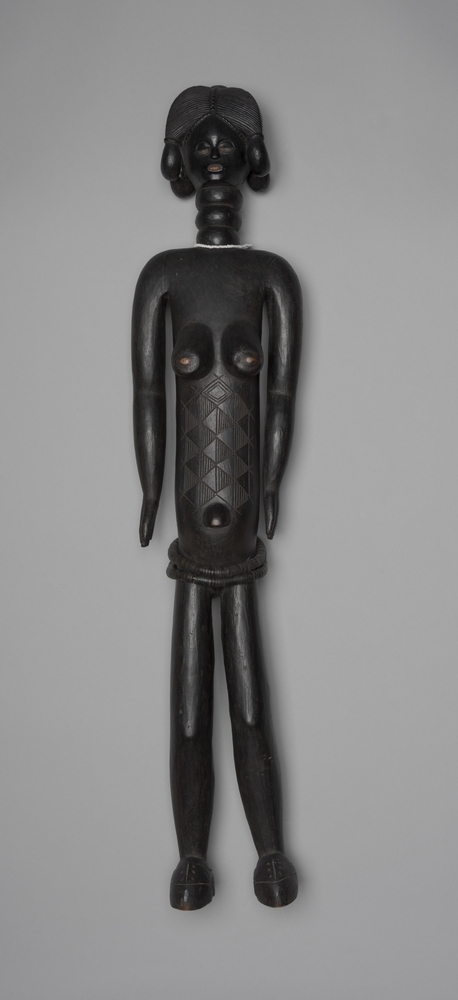
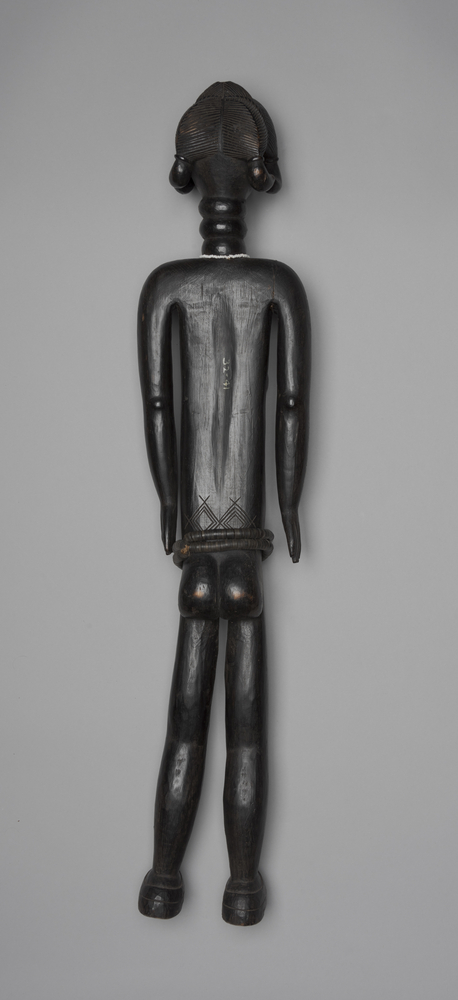
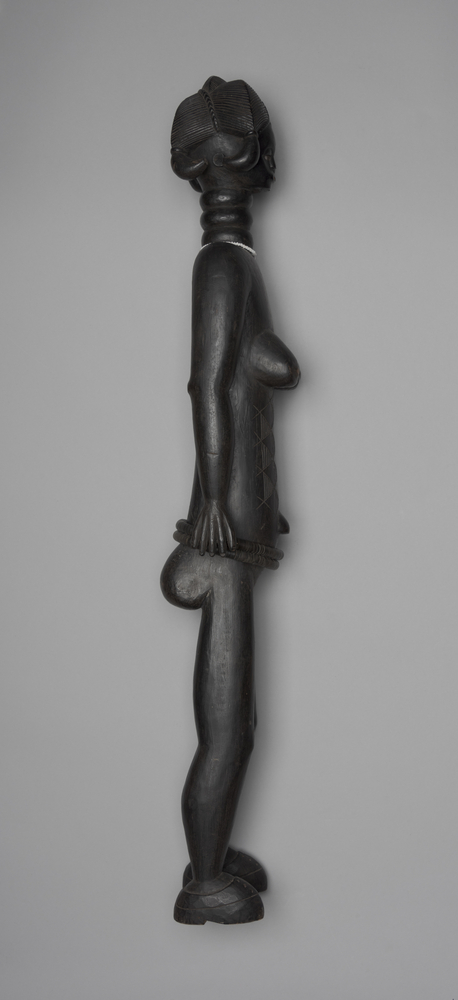
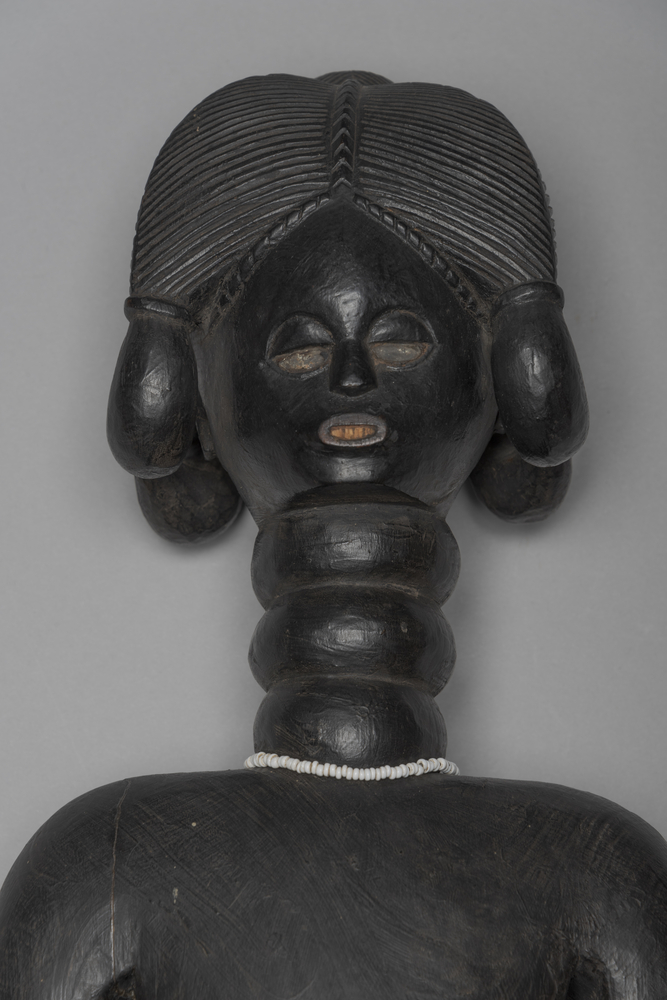
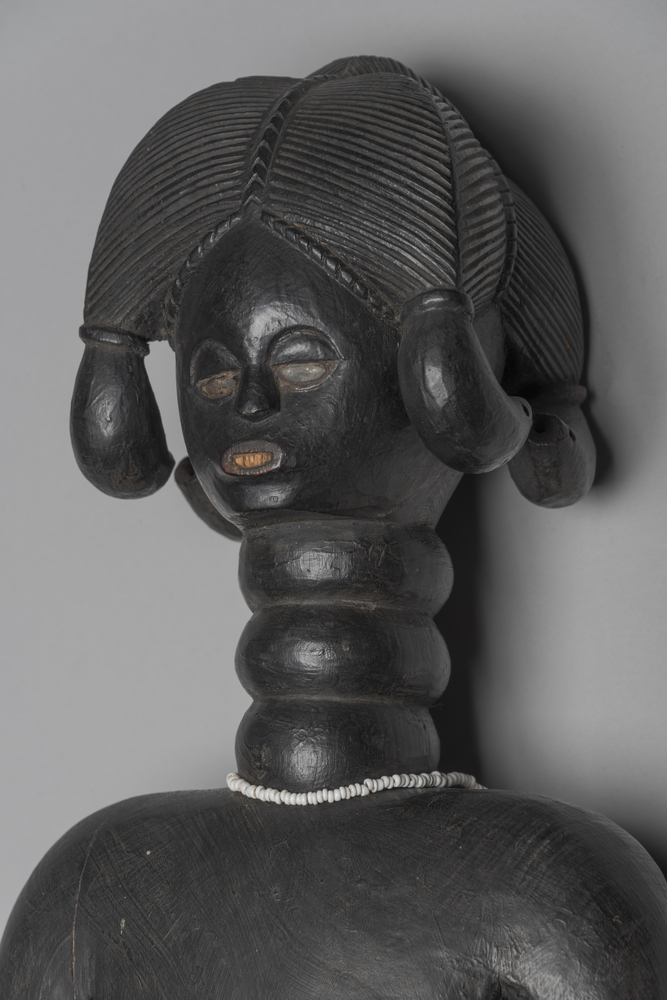
This is likely to be a wooden min or minsereh figure, though the term has broadly been used to refer to any carved female wooden figures. Min figures are traditionally used as part of the Yasi (Bullom) or Njayei (Mende) society for curing sickness, though they have also been associated with the Sande society. They contain spiritual power which is given to the figure by members of the society rather than the carver.
This example has a typical segmented neck and intricate hatched scarification marks incised into its stomach. It has two sets of wooden waist beads, and one set of white glass neck beads. The original catalogue identifies a 'horned headdress' however this is likely to refer to hair depicted as worn in two sets of bunches.
This is likely to be a wooden min or minsereh figure, though the term has broadly been used to refer to any carved female wooden figures. Min figures are traditionally used as part of the Yasi (Bullom) or Njayei (Mende) society for curing sickness, though they have also been associated with the Sande society. They contain spiritual power which is given to the figure by members of the society rather than the carver. This example has a typical segmented neck and intricate hatched scarification marks incised into its stomach. It has two sets of wooden waist beads, and one set of white glass neck beads. The original catalogue identifies a 'horned headdress' however this is likely to refer to hair depicted as worn in two sets of bunches.



